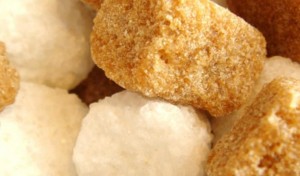Sugar Basics
 Canadians have a taste for sweet foods and beverages, but many are concerned about the calories that come along with eating them. The Academy of Nutrition and Dietetics recent position paper on the use of sweeteners states consumers can safely enjoy a range of sweeteners as long as it’s within an eating plan that is guided by current dietary guidelines. The World Health Organization strategy on diet endorsed limiting the intake of free or added sugars. So what is sugar by any other name? Sugars commonly found in food include: glucose or dextrose, fructose, galactose, sucrose (table sugar), maltose, corn-based sweeteners and agave nectar. Sugar most often refers to sucrose which is made from sugar cane or sugar beet. Fructose is found naturally in fruit and vegetables, and is very sweet tasting. The more fructose a type of sugar contains, the sweeter it tastes. Agave syrup is about 80% fructose and that is why it tastes so sweet. Sugars differ in colour, flavour and crystal size, but whether it’s honey, brown sugar, agave syrup of white sugar, nutritionally speaking, they are much the same, delivering 4 calories per gram with no other nutrients. Your body can’t tell the difference between where the sugars come from and uses them as concentrated sources of calories. The key to eating sugars is to choose them in small amounts and find ways to eat and use less without compromising on taste.
Canadians have a taste for sweet foods and beverages, but many are concerned about the calories that come along with eating them. The Academy of Nutrition and Dietetics recent position paper on the use of sweeteners states consumers can safely enjoy a range of sweeteners as long as it’s within an eating plan that is guided by current dietary guidelines. The World Health Organization strategy on diet endorsed limiting the intake of free or added sugars. So what is sugar by any other name? Sugars commonly found in food include: glucose or dextrose, fructose, galactose, sucrose (table sugar), maltose, corn-based sweeteners and agave nectar. Sugar most often refers to sucrose which is made from sugar cane or sugar beet. Fructose is found naturally in fruit and vegetables, and is very sweet tasting. The more fructose a type of sugar contains, the sweeter it tastes. Agave syrup is about 80% fructose and that is why it tastes so sweet. Sugars differ in colour, flavour and crystal size, but whether it’s honey, brown sugar, agave syrup of white sugar, nutritionally speaking, they are much the same, delivering 4 calories per gram with no other nutrients. Your body can’t tell the difference between where the sugars come from and uses them as concentrated sources of calories. The key to eating sugars is to choose them in small amounts and find ways to eat and use less without compromising on taste.